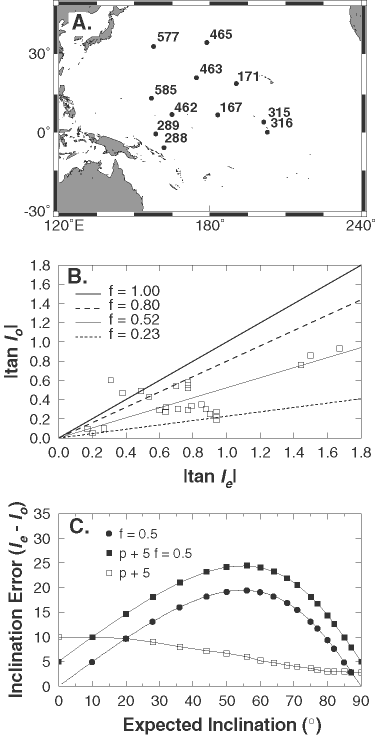
Figure 3. Evidence for compaction-induced inclination error in Pacific deep-sea sediments from Tarduno (1990). A. DSDP sites with sediment-based paleomagnetic data obtained using thorough demagnetization techniques. B. Test for bias in sediment-based paleomagnetic inclinations using 27 age groups. Io is the observed inclination.Ie is the expected inclination derived from nonsediment sources. A least-squares fit yields a slope, f = 0.52. A delete-1 jackknife resampling shows that the data reject the hypothesis of zero flattening (f = 1) at the 95% confidence interval. C. Inclination error vs. expected inclination for f = 0.5 (circles). Open squares = the maximum error in inclination caused by a 5° error in the reference pole, where p is the colatitude. Filled squares = the combined effect of inclination shallowing caused by compaction and an error in the reference pole.
